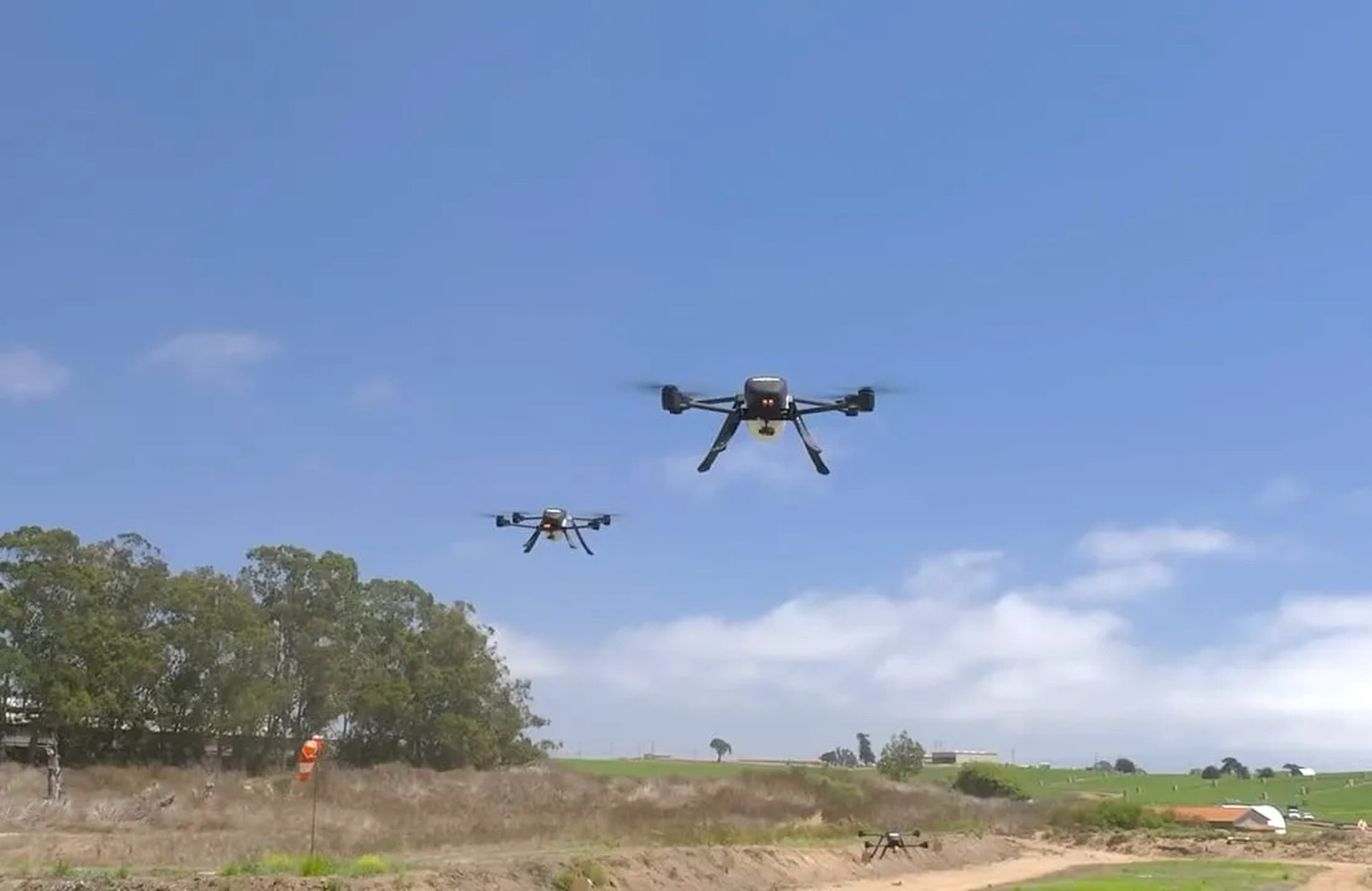
Seneca said its aerial suppression assets can be hand-carried, transported with a utility vehicle, or stationed and deployed remotely. | Source: Seneca
Seneca this week emerged from stealth with the goal of building autonomous aerial systems that use artificial intelligence to find and attack fires early. The company has raised $60 million in funding to advance its goal of delivering powerful fire suppression.
The startup said it can extend the reach of firefighters, utilities, and communities in situations that were once unsafe, inefficient, or impossible. The team has so far demonstrated the product’s capabilities on live fire and with fire agencies in four states.
“The best part of building over the last year has been to watch the product evolve — targeting accuracy improvements, payload increases, safety enhancements, usability upgrades — and to see firefighters react to new features with each generation,” said Seneca.
Seneca founders work with firefighters
Seneca said its founding team includes:
- Nick Foley, vice president of hardware
- Bill Clerico, head of fire strategy
- Adrian Aoun, head of technology
- David Glazer, chief financial officer
To develop the technology, they worked with fire leaders including Chief Dan Munsey of San Bernardino, Calif.; Chief Brian Fennessy of Orange County, Calif.; Chief Jake Andersen of Aspen, Colo.; and Chief Shepley Schroth-Cary of Gold Ridge, Calif.
Seneca said these collaborations ensure that its product provides immediate value to those fighting fires. The company’s advisory board includes people with long track records in the fire service, including:
- Dr. Lori Moore-Merrell, a former U.S. fire administrator
- John Mills, founder and CEO of Watch Duty
- Rick Balentine, a 25-year chief of the Aspen Fire Department
Caffeinated Capital and Convective Capital led the funding round. It also included participation from First Round Capital, Transition VC, Advance Venture Partners, Nextview Ventures, Bullpen Capital, Stepstone Group, DCVC, Offline Ventures, Roar Capital, Good Friends, Slow Ventures, and MHS Capital.
Seneca said it plans to use the investment to improve its capabilities, harden the overall system, increase production, and roll out the first systems to the field to save lives during the 2026 fire season.
Drones show potential in firefighting
Wildfire intensity has nearly tripled over the last two decades, according to Seneca. This has cost the U.S. economy around $1 trillion per year, upended thousands of lives, and destroyed wild spaces and communities. Seneca, like many other developers, believes drones and robotics can help solve this problem.
In late 2023, Rain, a developer of aerial wildfire containment technology, and Sikorsky, a Lockheed Martin company specializing in advanced rotorcraft, completed test flights using an autonomous helicopter. The system carried and dumped water onto wildfires in the very early stages.
The flight demonstration took place at Sikorsky’s headquarters in Stratford, Conn. The Optionally Piloted Black Hawk helicopter flew in autonomous mode with Sikorsky safety pilots on board.
Other companies, like Kodama Systems, are taking a more proactive approach by using technologies, including teleoperation and automation, to improve forest management operations. The company has developed an autonomous skidder to aid in forest thinning, which can help prevent wildfires from burning out of control.
Startups in government-funded sector face challenges
While there’s certainly a growing need for technologies that can help fight wildfires, startups still face struggles in this area. Many of them rely on government funding to stay afloat, making them vulnerable to policy changes.
Robotics 88, which won the Pitchfire competition at the 2024 RoboBusiness event, used drones to provide autonomous subcanopy surveys of fuel loads for prescribed burn planning.
The Boston startup closed its doors earlier this year. Erin Linebarger, founder and CEO of Robotics 88, told The Robot Report that she hopes to make the company’s IP open-source to help efforts to fight wildfires.
The post Seneca brings in $60M to develop fire suppression drones appeared first on The Robot Report.
